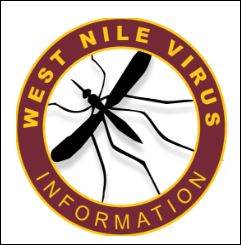
First Two Human Cases of West Nile Virus Identified in Connecticut This Season
The Connecticut Department of Public Health (DPH) today announced that a resident of Fairfield and a resident of Newington have tested positive for West Nile virus (WNV) infection. These are the first two human cases of WNV-associated illness identified in Connecticut this season.
The patients, who are between 60-79 years of age, became ill during the last week of July with encephalitis, were hospitalized, and are recovering. One remains hospitalized. Laboratory tests confirmed the presence of antibodies to WNV. These persons did not travel out of the state before becoming ill.
"The identification of two Connecticut residents with West Nile virus-associated illness that required hospitalization underscores the potential seriousness of infection," said DPH Commissioner Dr. Raul Pino. "Using insect repellent, covering bare skin and avoiding being outdoors during the hours of dusk and dawn are effective ways to help keep you from being bitten by mosquitoes."
"We continue to have weather conditions that are favorable for the mosquitoes that transmit West Nile virus," said Dr. Philip Armstrong, Medical Entomologist at the Connecticut Agricultural Experiment station (CAES). "These mosquitoes are most abundant in urban and suburban areas with dense human populations.”
West Nile virus has been detected in the state every year since 1999. Before 2018, 134 human cases of WNV were diagnosed in Connecticut residents including three fatalities. Last year, three Connecticut residents were diagnosed with WNV infection. For more information on WNV human cases in CT, click here.
Most people (8 out of 10) infected with WNV do not develop symptoms. About 1 in 5 people who are infected develop a fever and other symptoms. About 1 out of 150 infected people develop a serious, sometimes fatal, illness.
Tips for reducing mosquitoes around homes
Mosquitoes require water for reproduction. The following are measures that can help reduce mosquitoes:
- Eliminate standing water suitable for mosquitoes. Dispose of water-holding containers, such as ceramic pots, used tires, and tire swings.
- Drill holes in the bottom of containers such as those used for recycling.
- Clean clogged roof gutters.
- Turn over objects that may trap water when not in use, such as wading pools and wheelbarrows.
- Change water in bird baths on a weekly basis.
- Clean and chlorinate swimming pools. When pools are not in use, use pool covers and drain when necessary.
Tips for avoiding mosquito bites when outdoors
Mosquitoes require a blood meal for reproduction. The following are measures that can help reduce bites from mosquitoes that feed on people:
- Be particularly careful at dusk and dawn when mosquitoes are most active.
- Wear shoes, socks, long pants, and long-sleeved shirts. Clothing material should be tightly woven.
- Use mosquito netting when sleeping outdoors.
- Consider the use of CDC-recommended mosquito repellents, containing DEET, picaridin, oil of lemon eucalyptus, IR3535, or 2-undecanone, and apply according to directions, when it is necessary to be outdoors.
- When using DEET, use the lowest concentration effective for the time spent outdoors (for example, 6 percent lasts approximately two hours and 20 percent for four hours) and wash treated skin when returning indoors. Do not apply under clothing, to wounds or irritated skin, the hands of children, or to infants less than two months old.
- Also, be sure door and window screens are tight fitting and in good repair to avoid mosquito bites when indoors.
The State of Connecticut Mosquito Management Program is a collaborative effort involving the Department of Energy & Environmental Protection, the Connecticut Agricultural Experiment Station, the Department of Public Health, the Department of Agriculture, and the University of Connecticut Department of Pathobiology and Veterinary Science. These agencies are responsible for monitoring the potential public health threat of mosquito-borne diseases.
The CAES maintains a network of 91 mosquito-trapping stations in 72 municipalities throughout the state. Mosquito traps are set Monday through Thursday nights at each site every ten days on a rotating basis. Mosquitoes are grouped (pooled) for testing according to species, collection site, and date. Positive findings are reported to local health departments and on the CAES website at http://www.ct.gov/caes/mosquitotesting.
For information on West Nile virus and how to prevent mosquito bites, visit the Connecticut Mosquito Management Program Web site at www.ct.gov/mosquito.
M